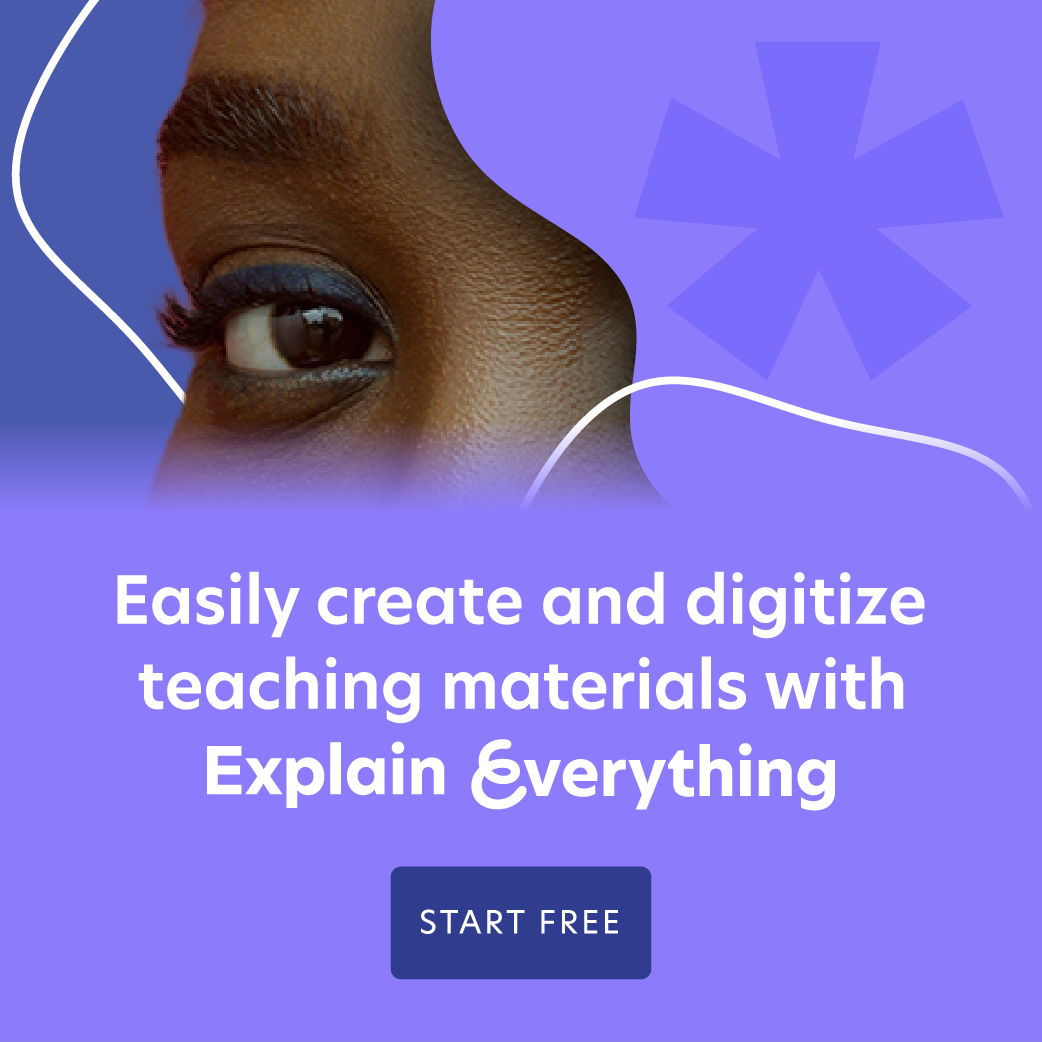Tony Vincent’s tips on Remote Teaching

Table of Contents
This past month has brought significant changes to all of our lives. The Explain Everything team has responded to the demand for #remoteteaching tools & practices by offering teachers free extended access along with a set of articles and live webinars to help them explore the ways our digital whiteboard can be used to teach from a distance.
In all truth, we never anticipated that the demand would be so enormous. Over the course of a month, we have provided our new users with over a million new accounts and pushed ourselves to the limit to keep up with the demand for online webinars. We wanted to be available for you when you need it most, and that’s why we did a 10h livestream on Youtube as a kind of a crazy extended Q&A.
But it was more than that. Having all these fantastic teachers on our livestream meant we could learn a lot from them, too! Here’s are the key moments from our conversation with Tony Vincent and the best tips he shared with us:
Tony Vincent (teacher and consultant for K-12 teachers) probably has the most experience using handheld devices in the classroom of any of us — he began doing that almost 20 years ago with Palm Pilots (if you still remember those!). Follow Tony on Twitter or on Instagram!
Here are the main takeaways of what Tony shared with us on the livestream — check them out, maybe they will come in handy for you, too!
- Attention span diminishes over time, hence the irritating, all-too-common problem with students in a classroom having a hard time listening to a live lesson for extended periods of time. Providing them with a review video to watch means they have a chance to rewatch it and take in the material at their own pace in a way they can’t when listening to live instructions.
- When the textbooks being used are perceived as boring, Tony uses the so-called ‘blackout technique’, covering key words or concepts and thus encouraging students to come up with their own predictions. This makes the process interesting, and can prove a good way to hook student interest even in a remote setting. Listen to Tony talking about this during our Livestream here.
- Using PDFs and images on a digital whiteboard reduces preparation time. In a classroom setting, Tony takes advantage of this to easily pull up pictures of students’ work to annotate and discuss. Here’s where we talk about how to use that in #remoteteaching.
- While Tony teaches a class on how to achieve perfection in video content, he made sure to stress that not all videos need to be perfect…especially 30-minute clips consumed by 5th graders! The fact that teachers don’t have time for perfection shouldn’t turn them off, as unpolished video content has plenty of upsides, too. Just consider authenticity and level of personal connection!
- To help teachers make sticky videos, Tony uses the “Success Model” model created by Chip Heath and Dan Heath in his online course on “Classy videos”. The model suggests qualities that make videos sticky, for example: the simplicity of the message, the element of surprise, tossing puns in here and there, or opening with questions to hook viewers. Not all videos will possess all of these qualities, but the more you have, the stickier the video is, no matter the production quality! Here’s the exact moment of the Livestream to watch to find out more.
- Don’t worry about students not being able to keep up with this new technology. Tony’s students initially just watched him using the tool — but after a year of observation, he was surprised to discover they knew how to help him out when he had a mental glitch one day! It turned out that simply observing the teacher had been enough — they knew how to use Explain Everything even before ever actually having used it! When you think about it, it is not all that surprising that kids are so keen to learn about new video technologies — lots of them dream of being YouTubers one day!
- The animation capabilities of video creation tools such as Explain Everything make it much more appealing to students because they can use fictional characters to tell their story on the stage that is the digital whiteboard. Teachers can, in turn, leverage that to help students develop their ideas and express them through a story.
But perhaps the most important tip Tony wanted to share with teachers just getting started using the video format in their remote teaching is: keep it small, short and simple. Especially in your first video: don’t try to explain everything, just explain one thing!
🎬 Conversation with Tony on our YT Livestream
Hop in some more useful resources:
- Tony’s online workshop “Classy Videos” 🎬
- Instructional video on how to turn a static presentation into a video.
- How to make a video follow-up to a whiteboarding session.
- Webinar dedicated to creating explainer videos for a classroom.
Join our next webinar for more inspiration, tips and knowledge.

